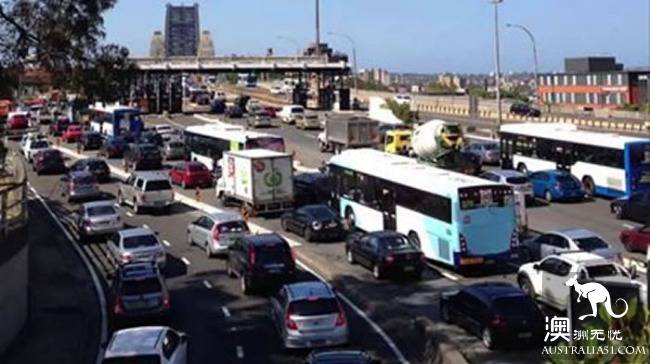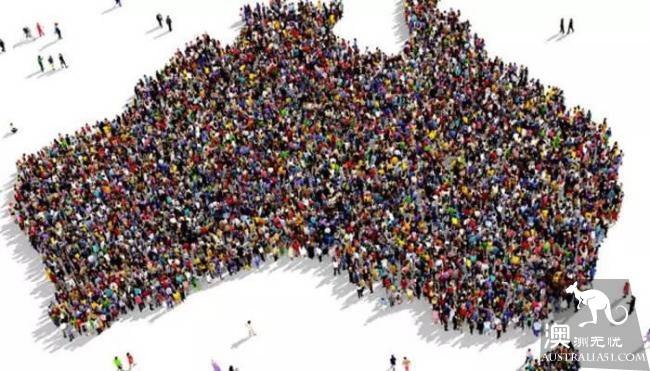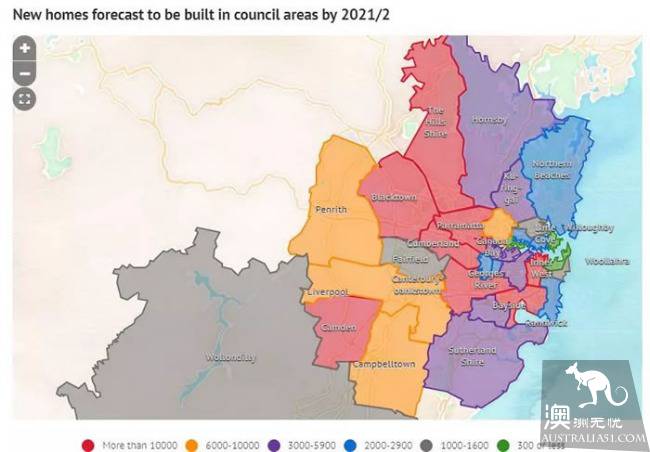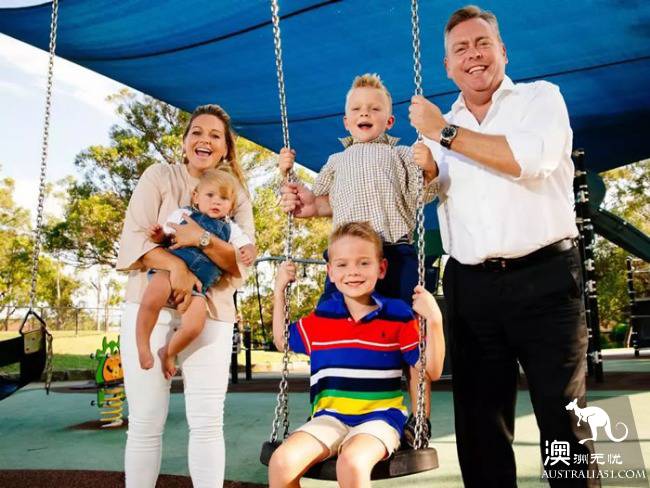Sydney is on its way to a population of 8 million by 2056.
Roads in many areas have been reduced to large parking lots, buses and trains in Sydney are struggling to cope with rapid population growth, and hospitals and schools in Sydney are overcrowded.

As Bob Carr, the former governor of the new state, put it, Australia's population is growing at a rate that "third world countries" are growing.

The surge in population should be accompanied by an increase in the number of homes that should keep pace with the housing shortage brought about by population growth.
For government, long-term planning seems a bit elusive.
In the short term, Australia's government plans to approve nearly two hundred thousand homes between 2017 and 2022 to ease housing tensions caused by population growth.
In the past five years, the three areas with the smallest increase in housing numbers were: Woollahra (131s), Hunters Hill (233 units and Mosman units (287units).
Over the next five years, Woollahra will add 250 and 300 new homes, respectively, to, Hunters Hill and Mosman, according to forecasts.
But that lags far behind the growth in the number of homes in the rest of Sydney.
It is worth noting that these three areas are located on the north shore and east side of Sydney.

Awais Piracha, an associate professor of urban planning at the University of West Sydney, believes that residents on the north coast and east side of Sydney have relatively high incomes and have a greater impact on government's development plans. It would also be easier to lobby government not to develop its own areas of residence, such as approval of new housing plans.
As a result, residential growth in these areas is very slow and the population is small.
However, the number of population increases is certain. If the north shore and east side do not increase population, it means that areas such as the west and southwest of Sydney will be subject to greater population pressure, and the more crowded it will be.
People living in the "rich zone" know more about how the government system works, and their careers, such as politicians, journalists, researchers and senior officials, also determine that they have a greater impact on government decision-making, Piracha said.
People living in West Sydney have little to do with government and have little impact on policy.
As a result, some parts of West Sydney are becoming more densely populated and less well-planned. Government's residential development plans are always implemented in areas that suffer less resistance.
In short, government picks soft persimmon kneading.
Government, in Sydney, is also "emotionally complex" about residential developments.
If too many residential development plans are approved, the development of a region will be led by developers; if there are too few approved residential development plans, the reduction of job opportunities in the area will slow the overall growth rate.
This is a very contradictory question.
But as a whole, Sydney is indeed becoming increasingly crowded. In fiscal year 2016-17, Sydney's population grew by one hundred thousand.
Anthony Roberts, planning and environment minister for New South Wales, has said he will consider moving his family away from Sydney in due course.

Sydney, he says, is so crowded that he wants to move to a place where there are fewer trees to live in order to grow up.
New state planning and environment department is responsible for community construction, land planning and housing, as well as job creation and environmental protection and other related services.
Simple answer, new state common people's living environment and this department is closely related. Now that the department's "top leader", Anthony Roberts, wants to "escape" Sydney, does it mean Sydney is really too crowded?